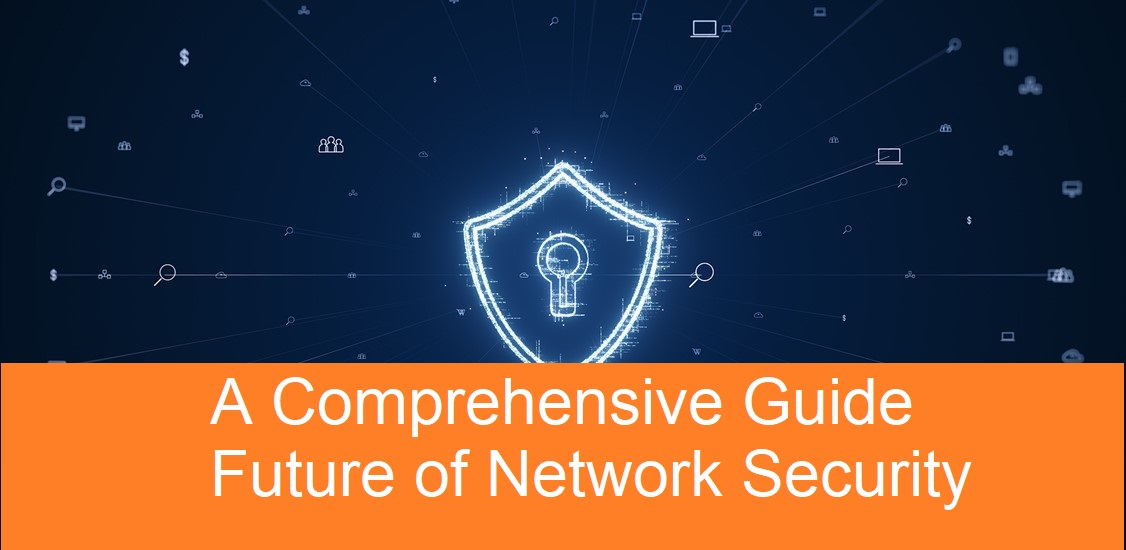In today’s interconnected world, network security has become paramount for individuals, businesses, and governments alike. With the increasing sophistication of cyber threats, safeguarding sensitive data and ensuring uninterrupted connectivity are more critical than ever. As we delve into the future of network security, it’s essential to understand the evolving landscape of threats and the technologies shaping its defense.
Understanding Network Security Challenges
1. Cyber Threat Landscape:
- Cyber Attacks: Threat actors employ various tactics, such as malware, phishing, and ransomware, to infiltrate networks and compromise data integrity.
- Advanced Persistent Threats (APTs): Sophisticated adversaries continuously target networks, often remaining undetected for extended periods, posing significant challenges to security teams.
- Insider Threats: Employees with malicious intent or inadvertently compromised credentials can exploit vulnerabilities from within the network.
2. Vulnerabilities and Exploits:
- Software Vulnerabilities: Flaws in network infrastructure, applications, or operating systems provide entry points for attackers to exploit.
- ZeroDay Exploits: Attackers leverage previously unknown vulnerabilities, making it challenging for organizations to defend against emerging threats.
- Social Engineering: Manipulating individuals to divulge sensitive information or perform actions that compromise network security remains a prevalent tactic among cybercriminals.
3. Compliance and Regulatory Requirements:
- Data Protection Laws: Regulations such as GDPR and CCPA impose stringent requirements on organizations to secure customer data and report breaches promptly.
- Industry Standards: Compliance with standards like PCI DSS for payment card data and HIPAA for healthcare information is essential to avoid penalties and maintain trust.
Current Strategies and Technologies in Network Security
1. Firewalls and Intrusion Detection Systems (IDS):
- NextGeneration Firewalls: Beyond traditional packet filtering, modern firewalls incorporate deep packet inspection, application awareness, and threat intelligence to detect and mitigate advanced threats.
- Intrusion Detection and Prevention Systems (IDPS): These systems analyze network traffic for suspicious activities and can automatically respond to potential threats, enhancing proactive defense mechanisms.
2. Encryption and Authentication Mechanisms:
- Transport Layer Security (TLS): Encrypting data in transit using TLS ensures confidentiality and integrity, safeguarding sensitive information from eavesdropping and tampering.
- MultiFactor Authentication (MFA): Combining multiple authentication factors, such as passwords, biometrics, and hardware tokens, strengthens access controls and mitigates the risk of unauthorized access.
3. Endpoint Security Solutions:
- Antivirus and AntiMalware Software: Continuous monitoring and realtime scanning of endpoints protect against malicious software and unauthorized access attempts.
- Endpoint Detection and Response (EDR): EDR solutions provide advanced threat detection capabilities, enabling organizations to identify and respond to security incidents across their network endpoints.
The Future of Network Security
1. Artificial Intelligence and Machine Learning:
- Behavioral Analytics: AIdriven systems analyze user and device behavior to detect anomalies and potential security threats, enhancing proactive threat detection capabilities.
- Predictive Security: Machine learning algorithms leverage historical data to anticipate and prevent future cyber attacks, enabling organizations to stay ahead of evolving threats.
2. Zero Trust Architecture:
- Continuous Authentication: Zero Trust models enforce strict access controls based on identity verification and continuously monitor user behavior to detect unauthorized activities.
- MicroSegmentation: Segmenting network resources into smaller, isolated zones limits the lateral movement of attackers and reduces the potential impact of security breaches.
3. QuantumSafe Cryptography:
- PostQuantum Cryptography (PQC): As quantum computing poses a threat to current cryptographic algorithms, PQC aims to develop encryption methods resistant to quantum attacks, ensuring longterm security of sensitive data.
- Quantum Key Distribution (QKD): Leveraging the principles of quantum mechanics, QKD enables secure key exchange between communicating parties, offering protection against interception and eavesdropping.
The future of network security is characterized by a combination of advanced technologies, proactive defense strategies, and stringent compliance measures. By embracing emerging trends such as AIdriven threat detection, Zero Trust architecture, and quantumsafe cryptography, organizations can strengthen their cyber resilience and adapt to the evolving threat landscape effectively. As technology continues to evolve, staying vigilant and proactive in mitigating emerging risks will be crucial in safeguarding the integrity and confidentiality of networked systems and data.







